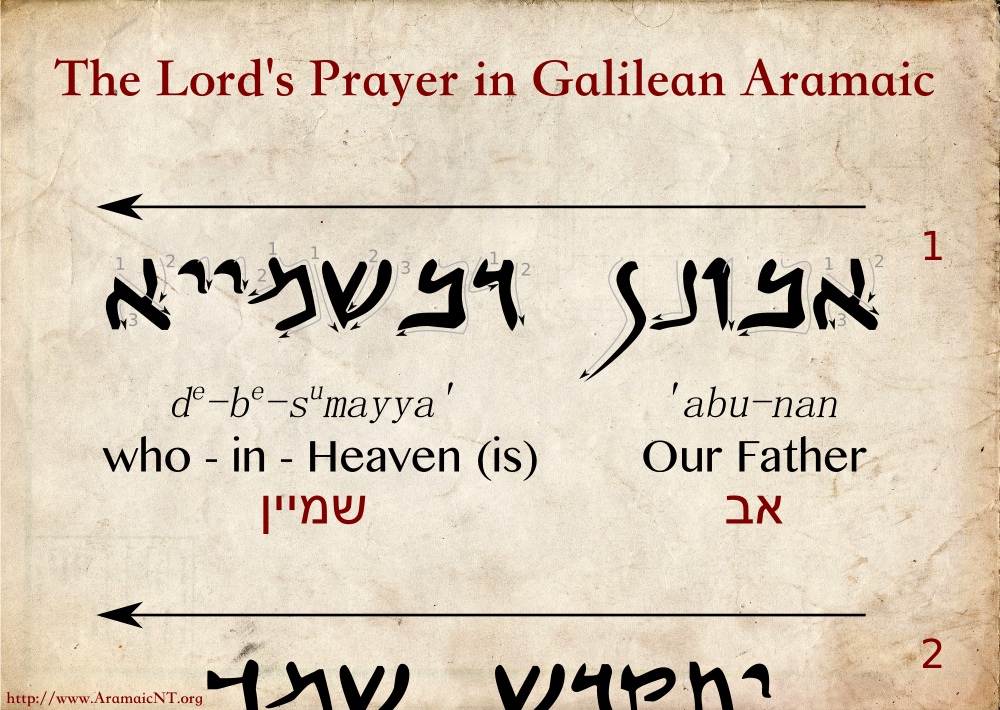Over on AramaicNT.org:
As per request, we nearly have The Lord's Prayer, reconstructed in early Galilean Aramaic in its most primitive form ready to share. It will be presented in the same form as the rest of the translation project so that anyone can pronounce it well and easily without prior knowledge of the language, itself.
It will also be accompanied by a set of notes detailing the different choices and difficulties involved with the translation effort, as well as possible alternate readings, and discussions about the prayer within the context and culture of Biblical times.
But there is a lot more that is coming with it. Project supporters will also have access to:
- The Prayer written in Aramaic handwriting contemporary to Jesus and his followers.
- An audio recording of how it could have sounded when spoken among early Christians.
- Reconstructions of both longer-form traditions (including the doxology) as found in Matthew and Luke as well as extended translation notes for all versions.
- The full ARC010: The Aramaic Lord's Prayer class from DARIUS that includes the following topics:
- What is So Special About the Lord's Prayer?
- A (Brief) History of Aramaic & the Dialect of Jesus
- The Syriac Peshitta Tradition
- Other Syriac Traditions and Their Relations to Each Other
- Scholarly Reconstructions
- Modern Aramaic Traditions
- Odd Translations
It's going to be a heck of a lot of fun.
Peace,
-Steve
-Steve

























